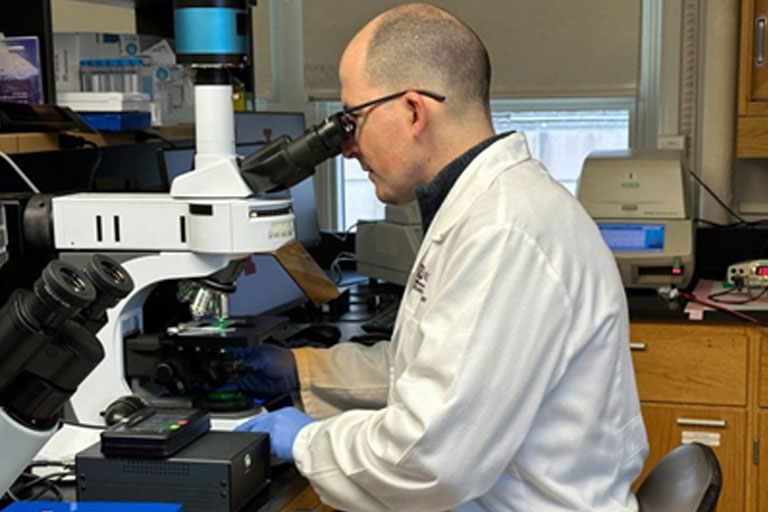Indiana University's Innovation and Commercialization Office (ICO) has published IU's current therapeutic pipeline of potential drug candidates. (See chart below.) A total of 48 therapeutic technologies are currently under development for treating diseases ranging from cancer to metabolic disorders, diabetic retinopathy, inflammation disorders, neurodegenerative diseases, and more.
IU's ICO works closely with researchers and other stakeholders, overseeing all aspects of the technology transfer and commercialization process for advancing therapeutic technologies to market. Several products currently under development are part of IU startups that have raised private investment funds to develop and commercialize these life-changing technologies.
The following stories highlight select therapeutic technologies being developed by IU researchers.
IU School of Medicine researcher develops a novel, highly efficient method of producing retinal organoids
Jason Meyer, an associate professor and the A. Donald Merritt Investigator of Medical and Molecular Genetics at the IU School of Medicine, has developed a method of producing retinal organoids that could lead to treatments that slow or reverse retinal degenerative diseases.
IU School of Medicine researcher develops non-invasive tool to detect mutations that could potentially lead to breast cancer
Harikrishna Nakshatri, Marian J. Morrison Professor of Breast Cancer Research and professor of surgery, biochemistry and molecular biology at the IU School of Medicine, has developed a non-invasive diagnostic tool that detects mutations that could lead to early-stage breast cancer.
IU School of Medicine researchers find RAP minimizes nephrotoxicity and acute kidney injury
Bruce Molitoris, MD, MS, a distinguished professor emeritus at the Indiana University School of Medicine and internationally acclaimed scientist, has determined that the Alpha-2-macroglubin Receptor Associated Protein (RAP) minimizes drug-induced kidney injury.
IU researcher develops new therapy for treatment of ALS
Chandler Walker, an associate professor at the IU School of Dentistry and adjunct associate professor of anatomy, cell biology and physiology at the IU School of Medicine, has developed a secretome therapy that targets both the central nervous system and peripheral nervous system to slow disease progression of ALS.
ICO's partnership critical to Mark Kelley's success
Mark Kelley, Betty and Earl Herr Professor of Pediatric Oncology Research at the IU School of Medicine and Chief Scientific Founder and Officer of Apexian Pharmaceuticals, has developed a preventative therapeutic oral drug (APX3330) to slow the progression of diabetic retinopathy.
Ocuphire Pharma, a public clinical-stage ophthalmic biopharmaceutical company, licensed APX3330 and recently released their Phase 2 Clinical Trial Results of Oral APX3330.


